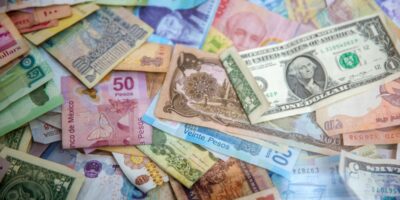Understanding the 1953 Penny: Collectors and Coin Enthusiasts Take Note
When discussing the value of a 1953 penny, several factors must be considered. The year 1953 was a significant one for penny production in the United States. These coins, minted post-World War II, showcase the historical significance and evolution of U.S. coinage. Examining these pennies allows us to gain insights into the economic context and the minting processes of the time.
The Mintage of the 1953 Penny

The United States Mint produced pennies in three different locations in 1953: Philadelphia, Denver, and San Francisco. The distinguishing marks for pennies from Denver and San Francisco are the small letters D and S found below the date. Pennies minted in Philadelphia have no mint mark. Each facility produced a substantial number of pennies, although the numbers varied:
- Philadelphia Mint: Approximately 256 million pennies.
- Denver Mint: Approximately 700 million pennies.
- San Francisco Mint: Approximately 181 million pennies.
The vast numbers from these mints generally imply that the coins are not scarce. However, scarcity can be affected by variations, condition, and demand in the collector’s market.
Factors Affecting the 1953 Penny’s Value
The value of a 1953 penny can be influenced by several core factors. Each plays a crucial role in the coin valuation process. Understanding these factors can help in appraising the worth of any given penny from this era:
- Condition: Coins are graded based on their condition. The grade ranges from Good (G), with clear wear, to Mint State (MS), signifying lack of wear and full details. Higher-grade coins are generally more valued.
- Mint Marks: Coins from certain mints can be more valuable depending on the number minted or specific historical significance.
- Errors and Variations: Minting errors, such as doubled dies, can add considerably to a penny’s value. Collectors often seek these unique coins.
Evaluating the 1953 Penny’s Condition
The grading process can be quite specific. To fully understand the potential value of a 1953 penny, it’s essential to examine its condition carefully. Here are typical grades used in numismatics:
- Good (G): The penny will have heavy wear, though date and design details remain visible.
- Very Fine (VF): Light to moderate wear is present. Most details are clear and sharp.
- Extremely Fine (EF): Little wear is visible, primarily on high points.
- Uncirculated (MS): No wear exists; features are crisp. The quality indicates the penny did not enter circulation.
Professional grading can determine more precise evaluations, often required for high-end coins. Many collectors invest in such appraisals to ensure accurate valuations.
Special Considerations: Errors and Rare Types
Error coins are a fascination for many collectors. Even in high mintage years, these unique anomalies can bring significant value. The most sought-after errors in a 1953 penny include:
- Doubled Die: These arise when a die imprints a doubled image on a coin’s surface. It’s a rare but celebrated occurrence among enthusiasts.
- Off-center strikes or clipped planchets: Visible design or rim faults due to misalignment during production.
These variations are prized for their rarity and bring considerable intrigue to coin collecting. They offer a glimpse into the mint’s operational specifics at a time when quality control wasn’t as stringent as today’s standards.
The Demand for 1953 Pennies
As with any collectible, demand in the marketplace can significantly influence pricing. The Lincoln wheat penny series, which includes the 1953 issue, has long been popular. Many collectors appreciate this series for its historical context and design aesthetics. Completing a full collection often means including pennies from every mint and every year of the wheat penny’s issuance. Demand can fluctuate due to market trends, collector interests, and public fascination, but Lincoln pennies maintain a steady interest base.
Current Market Values
Pennies from 1953 generally exhibit modest intrinsic value based on metal content, primarily copper. However, their collector value can vary more significantly:
- Common Grades: Circulated 1953 pennies, especially those without errors, typically have a modest market value.
- Higher Grades: Uncirculated examples can fetch higher prices, particularly those with strong eye appeal and no major impairments.
- Rare Errors: Premiums apply to error coins in appealing grades. Each unique fault can increase the penny’s desirability and price.
The values are dynamic. They shift with the demands of the collector market, making periodic re-evaluation crucial for serious collectors.
Preservation and Storage Tips
To maintain a penny’s condition and, consequently, its value, careful storage is essential. Moist environments can lead to corrosion, diminishing appearance and worth. Here are some useful tips:
- Avoid Touching Bare Hands: Natural oils can corrode the penny’s surface. Use cotton gloves or handle by the edges.
- Store in a Cool, Dry Place: Fluctuating temperatures and humidity can negatively affect copper coins.
- Utilize Protective Holders: Airtight containers or acid-free flips can prevent damage from elements and physical contact.
Proper storage adds longevity to a collection, ensuring that coins remain in good condition for future appraisals or sales.
Resources and Expert Guidance
For those keen on delving further into the realm of coin collecting, numerous resources are available. Some reliable options include:
- Professional Organizations: The American Numismatic Association provides educational materials, member forums, and certification programs.
- Online Forums and Communities: Websites like CoinTalk and Reddit have flourishing communities with enthusiasts eager to share knowledge and advice.
- Coin Shows and Conventions: These events offer opportunities to network, buy, sell, and learn about rare and valuable coins.
Investing time in education and networking can profoundly enhance a collector’s understanding and enjoyment of numismatics.
Recommended Collecting Supplies
Coin Collection Book Holder Album – $9.99
312 pockets for coins of all sizes.
20x Magnifier Jewelry Loupe – $13.99
Essential tool for examining coins and stamps.
As an Amazon Associate, we earn from qualifying purchases.




Subscribe for Updates
Get the latest articles delivered to your inbox.
We respect your privacy. Unsubscribe anytime.